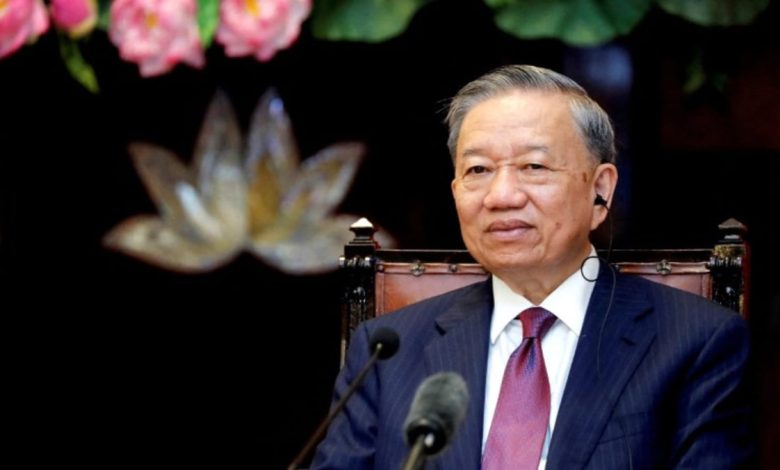Vietnam’s President To Lam to visit China, with trade and rail links on the agenda

TO LAM’S RISE TO POWER
Political power in Vietnam is traditionally shared among the top four pillars – the president and prime minister of the country, the general secretary of the Communist Party, and the chair of the National Assembly.
Mr Lam occupies two of the four positions, as well as the nation’s highest military office as secretary of the Central Military Commission, a position he naturally assumes as party chief.
A decades-long veteran in the nation’s public security apparatus, Mr Lam rapidly ascended among the governing elites. He went from being Vietnam’s chief policeman to president, and added party general secretary to his portfolio, all in less than three months.
A new face in Vietnam’s next generation of leadership, his most recent prominent engagement in foreign policies was in June, when he hosted Russian President Vladimir Putin in Hanoi. Russia, too, has strong historical and ideological ties to Vietnam.
ROBUST ECONOMIC TIES
Vietnam’s Foreign Minister Bui Thanh Son told local media that the state visit to Beijing this time will be another milestone, opening a new period in Vietnam-China relations.
Analysts say a key purpose of the visit is for the new Vietnamese leader to establish a personal rapport with his Chinese counterpart.
“Vietnam considers China-Vietnam relations a strategic choice. The two countries share a border; they share many similarities, including the structure of the political system,” said Dr Hai.
He also expects Mr Lam to discuss Vietnam’s trade deficit with Mr Xi, and push for a more balanced trade volume between the two countries.
China is Vietnam’s largest trading partner, with two-way trade accounting for US$173.3 billion last year.
However, Vietnam’s exports to China is at less than half of the value of imports, indicating its heavy reliance on Chinese goods, especially raw inputs from Vietnam’s industrial products.
SOUTH CHINA SEA TENSIONS
Mr Lam’s upcoming visit takes place amid rising tensions in the South China Sea, where both sides have been locked in a long-running territorial dispute.
This year marks the 10-year anniversary of massive anti-China protests in Vietnam, after Beijing installed an oil rig off Vietnam’s coast near disputed islands.
Bilateral tensions in the South China Sea have been relatively well contained since.
In fact, observers note that in the past two years, Vietnam has stepped up construction there without apparent objection or interference from China.
Another key discussion in Beijing during Mr Lam’s visit will be to manage the maritime dispute.
TREADING A BALANCE
Amid the rivalry between China and the United States, Vietnam wants to keep a balance in relationships with both countries, said observers.
“Vietnam considers the United States a strategic priority. Vietnam’s development really needs a very peaceful environment and security,” said Dr Hai.
Mr Lam’s visit will be closely watched by the domestic public, which holds deep mistrust of China due to centuries of wars.
“Relations with China are our first and foremost priority. We want to maintain friendship ties,” said Tran Tam Giap, a Hanoi resident.
“Many people in Vietnam say we are not afraid of China. If it comes down to a fight, we are ready to fight. But that presents a lot of damage. Peace and stability are in our best interests.”

